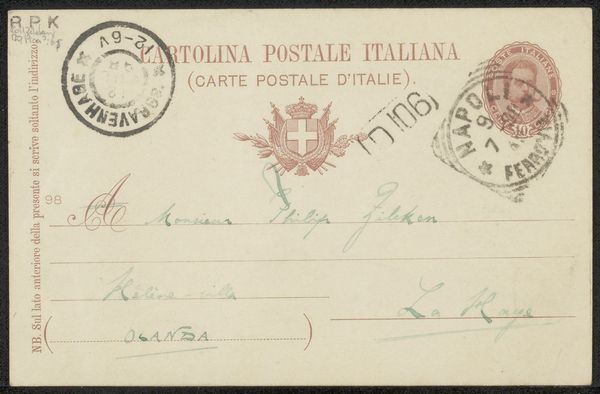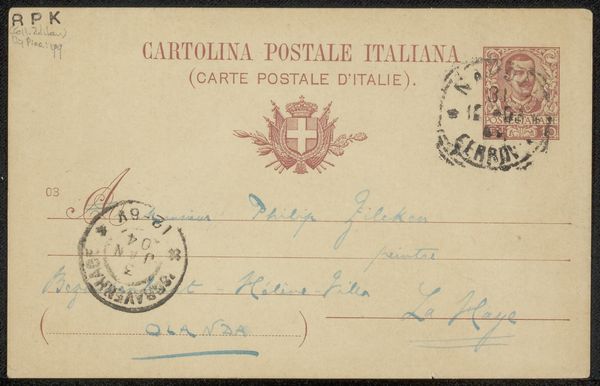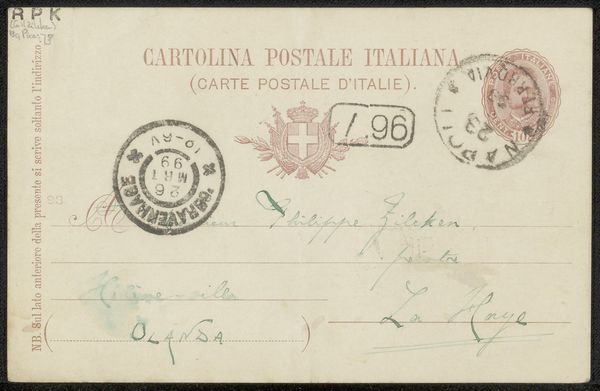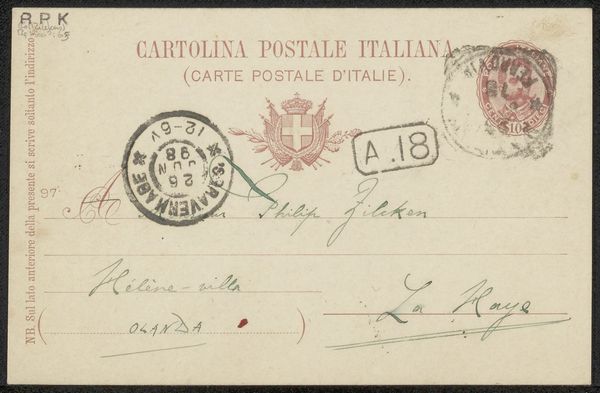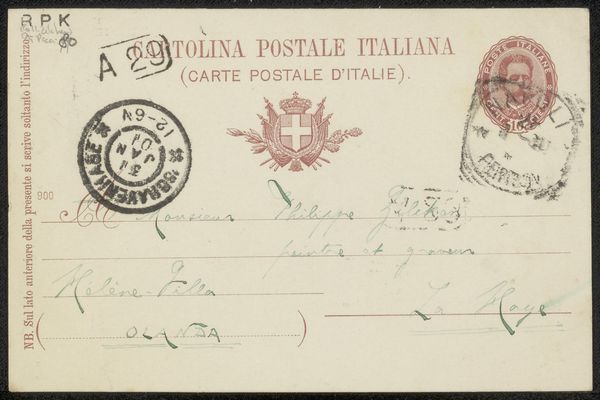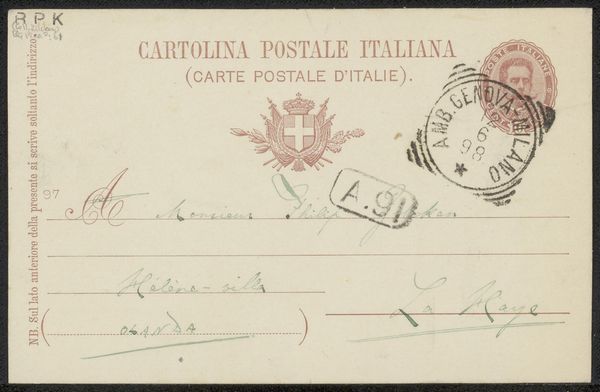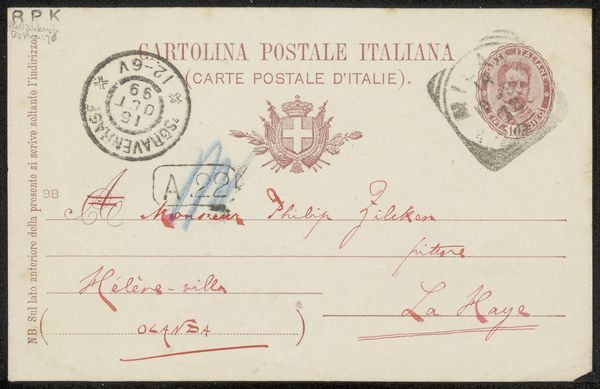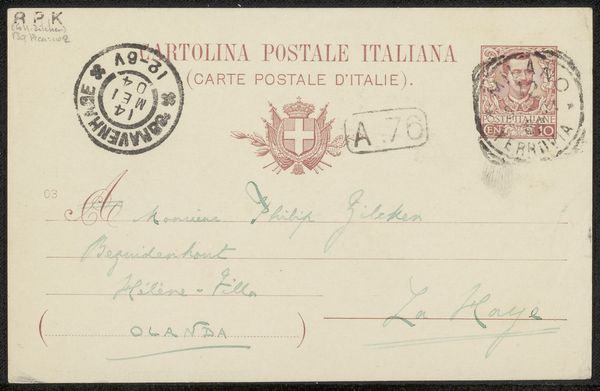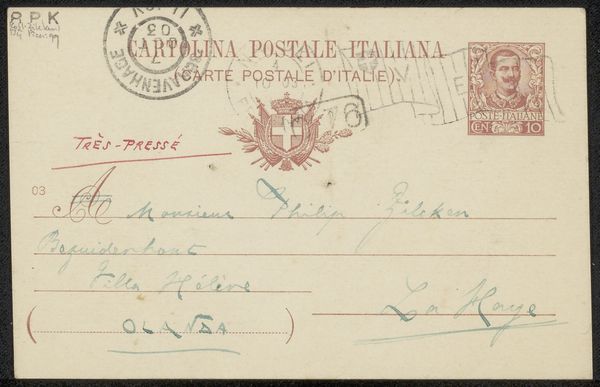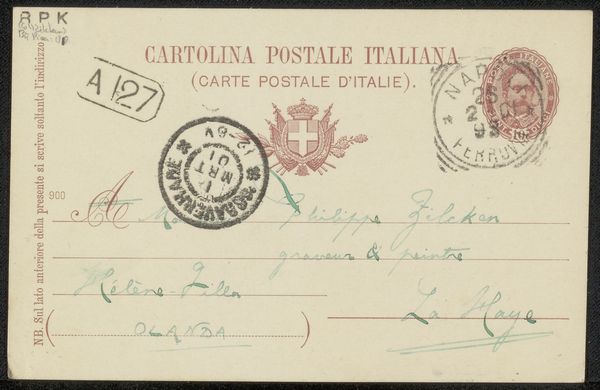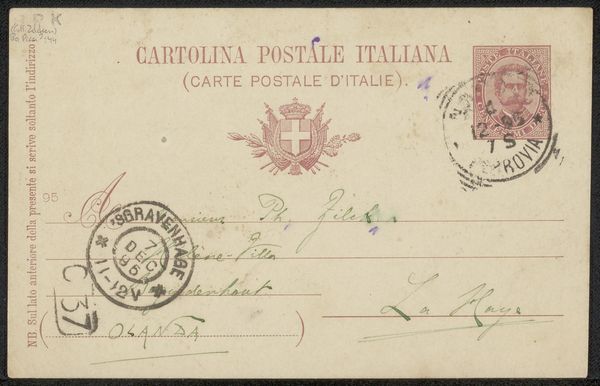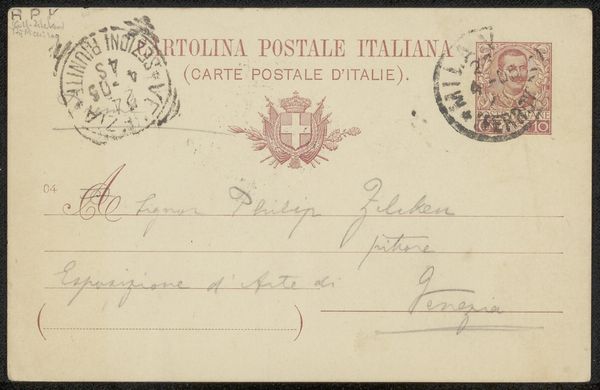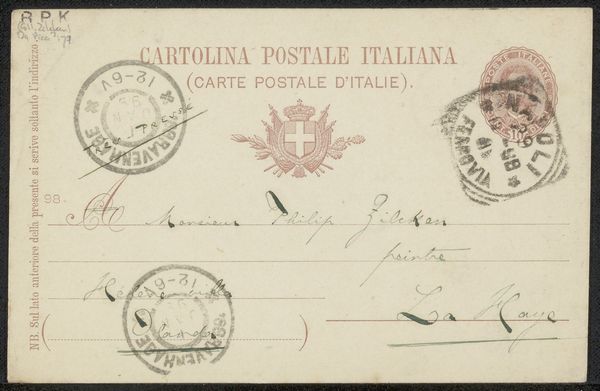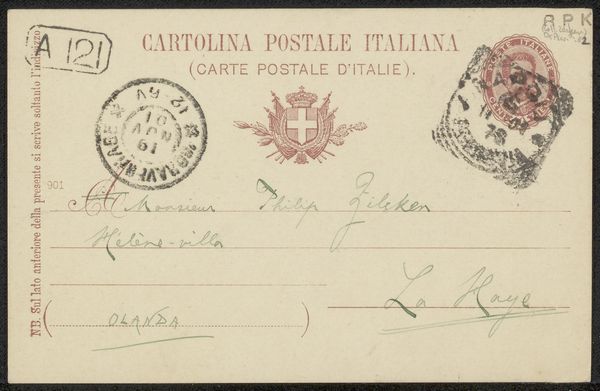
mixed-media, print, photography, collotype
#
portrait
#
mixed-media
# print
#
photography
#
collotype
#
calligraphy
Copyright: Rijks Museum: Open Domain
Curator: I am struck by the delicate aging of this postcard. Before us, we have "Briefkaart aan Philip Zilcken," which roughly translates to "Postcard to Philip Zilcken." Its creation is estimated somewhere between 1904 and 1918. We see that it utilizes mixed media; combining print, photography, collotype and delicate calligraphy. Editor: Right! At first glance, this postcard evokes such a sense of fleeting connection, like a whisper across time. I almost feel a wistful melancholy radiating from it. I wonder about Philip Zilcken; did he treasure it? The faded stamp, the faint ink... it is more than just an artifact! Curator: Precisely. The social history here is particularly intriguing when we consider the function of postcards during the early 20th century. These were a key communication method, connecting people across distances at a relatively accessible cost, offering a unique snapshot into the intimacy and formal conventions of interpersonal communication during that period. How did such an accessible means shift class and social structures within the art-world? Editor: Exactly, and notice the blend of media! It is like the artist sought to elevate the ordinary with elegant calligraphy. Zilcken must have felt quite special to have received such personalized correspondence. It is as if the act of mailing itself has transformed an otherwise routine exchange into a miniature artistic event. And I love that about it! Curator: We also should consider this specific method, the collotype printing process involved. It emphasizes the deliberate choices and artistic effort embedded in creating even what we would consider ephemeral objects. We must acknowledge how materials also dictate meaning- how has industrial advancements changed not only the style of these postcards, but the ways in which identity, labor, and subjectivity are intertwined within the artmaking. Editor: Beautiful. The vulnerability and openness really draws the eye. Knowing that a human hand guided that pen so many years ago... gives this ordinary mail something powerful, something resonant with human warmth. It tells its own story about where art can be found and found often, even when it's hidden in our history. Curator: Absolutely. It allows us to ask broader questions about accessibility, agency, and visibility and I hope everyone pauses to explore those questions here, when we find art, even in places where we expect it least. Editor: Well said! I hope everyone feels something from it... imagines and keeps its echoes in their hearts, or their notebooks, too.
Comments
No comments
Be the first to comment and join the conversation on the ultimate creative platform.
